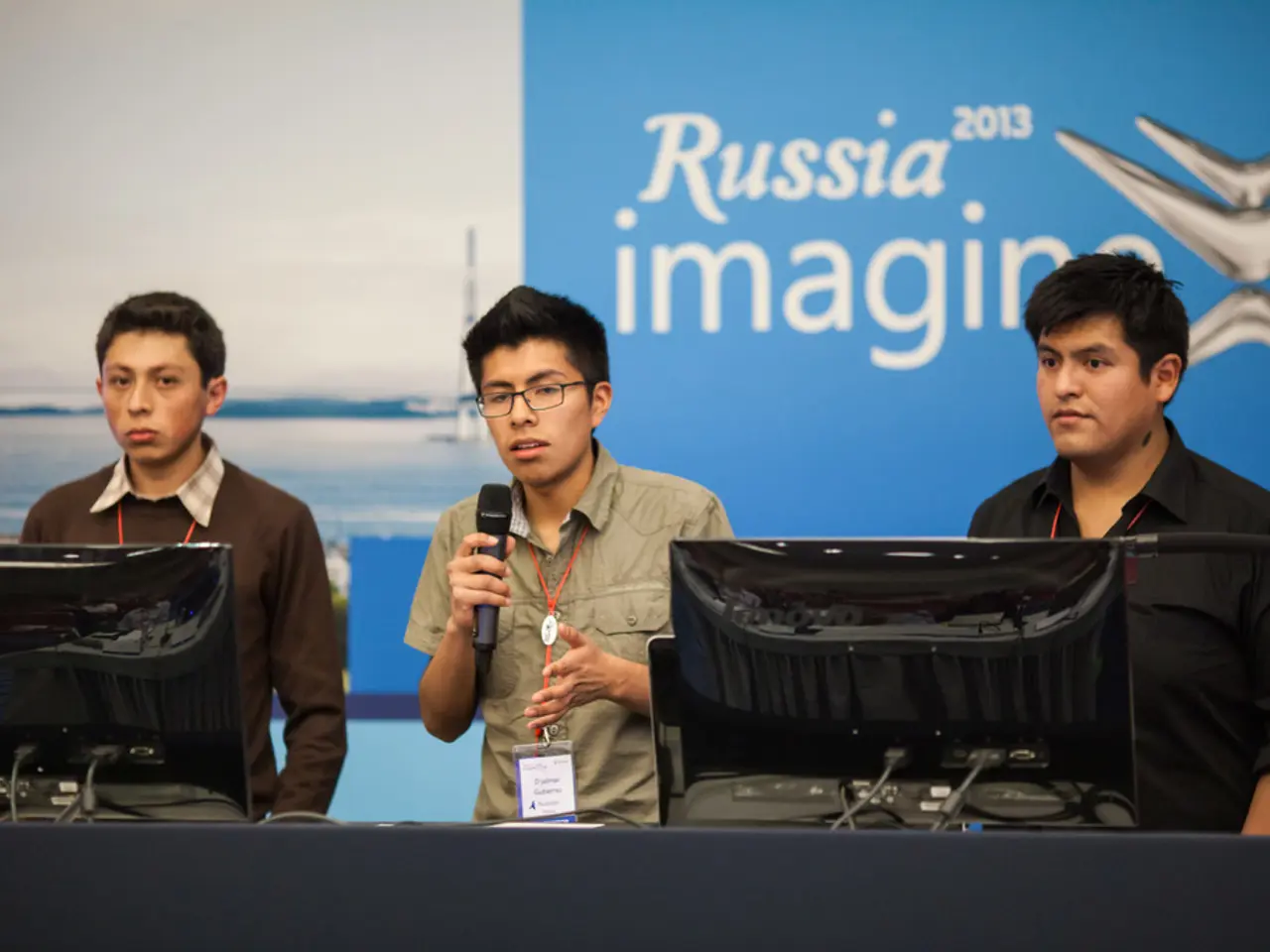Putin's actions in continuing the conflict with Ukraine may lead to harsh repercussions according to Trump's statements.
In recent developments, high-level meetings involving President Vladimir Putin, President Donald Trump, and Ukrainian President Volodymyr Zelenskyy have been centered around potential peace efforts, security guarantees, and future meetings between the leaders.
During a rapid diplomatic effort, President Trump met with Putin in Alaska and Zelenskyy at the White House in August 2025. Trump expressed optimism that both Putin and Zelenskyy could agree to peace and committed to supporting European partners in providing security guarantees for Ukraine. Trump also indicated he was working to arrange a bilateral meeting between Putin and Zelenskyy, following an initial idea of a trilateral meeting including himself.
The meetings with Putin, notably the red carpet reception in Anchorage, served as symbolic victories for Putin, helping to end some of his international isolation, while also allowing him to avoid immediate sanctions and ceasefire calls. However, despite these diplomatic activities, Russia, represented by Foreign Minister Sergei Lavrov, has taken an uncompromising stance, insisting on a veto over Ukraine's future security arrangements and downplaying the likelihood of direct Putin-Zelenskyy talks. Russia's ongoing military actions, including a massive bombardment with missile strikes on Ukrainian infrastructure, underscore its reluctance toward a peaceful settlement without military advantage.
Zelenskyy used his meeting with Trump to secure tentative U.S. support in security guarantees without conceding any Ukrainian territory, consistent with his constitutional stance against ceding territory to Russia. Zelenskyy has emphasized Ukraine's sovereignty and its role as the decision-maker regarding territorial matters, opposing Moscow's focus on regions like Donbas that are vital to Ukraine’s industrial base.
President Trump's threat of "very severe consequences" for Putin, though not detailed explicitly, is part of his broader approach to pressure Russia toward peace talks while maintaining support for Ukraine's defense.
In summary, while the meetings demonstrated diplomatic engagement from all three leaders, significant obstacles remain: Russia’s insistence on control over Ukraine’s security guarantees, ongoing military aggression, Zelenskyy’s refusal to yield territory, and uncertain follow-through on planned Putin-Zelenskyy or trilateral summits. Trump’s role appears to be that of a mediator proposing and supporting negotiations and security arrangements, but Russia’s current posture limits prospects for immediate peace without a shift in the military or diplomatic landscape.
Zelenskyy has stated that his nation is "ready for real decisions that can bring peace," while Putin has expressed his unwillingness to meet with Zelenskyy. It is up to Putin to decide if he wants to include Zelenskyy in the summit, and Zelenskyy has expressed his desire to attend. The leaders said Trump has committed to making a priority of achieving a ceasefire in Ukraine when he meets with Putin in Alaska on Friday.
These developments underscore the complex and ongoing nature of the Russia-Ukraine conflict, with diplomatic efforts continuing in an attempt to bring about a peaceful resolution.
The ongoing diplomatic efforts, involving policy-and-legislation and politics, are focused on finding a resolution to the war-and-conflicts between Russia and Ukraine, as evidenced by high-level meetings between President Vladimir Putin, President Donald Trump, and Ukrainian President Volodymyr Zelenskyy. Despite tentative progress, general-news reports indicate that significant obstacles remain, including Russia’s insistence on control over Ukraine’s security guarantees, ongoing military aggression, and Zelenskyy’s refusal to yield territory. The leaders have expressed their commitment to continuing these diplomatic negotiations, with Trump proposing a potential trilateral summit as a means to achieve a ceasefire in Ukraine.






